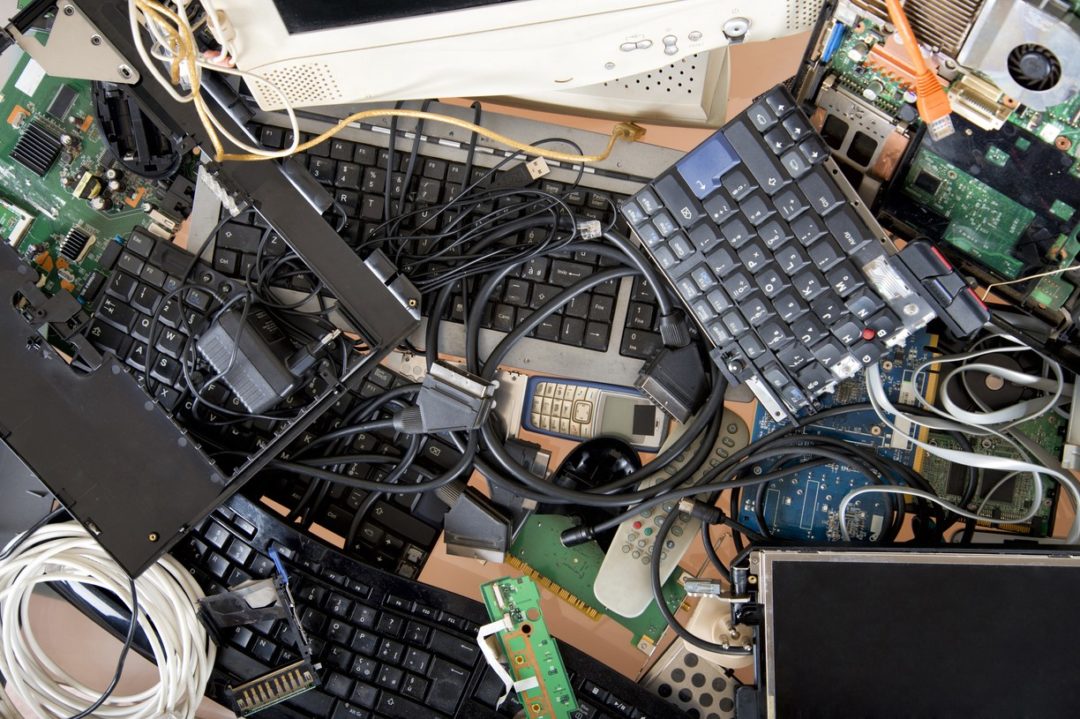
The world is awash in what’s been called a “tsunami of e-waste,” and technology companies must accept accountability for stemming this tide.
In 2021, 57.4 million metric tons of e-waste, including IT assets, entered the global waste stream. That’s heavier than the Great Wall of China. This scenario makes it vital for businesses to operate with a positive environmental impact if they want to maintain brand loyalty, remain successful in the long term, and do what’s right for the environment and future generations.
With e-waste management playing a critical role in the United Nations 2030 Agenda for Sustainable Development, IT companies have the opportunity to develop new ways of doing business that reduce the environmental impact of their operations.
Embracing a Circular Economy Model
According to the MacArthur Foundation, a circular economy model is based on three principles:
- Designing manufacturing and supply chain processes that eliminate waste and pollution,
- Keeping products and materials in use at the highest possible value, and
- Regenerating natural systems as much as possible
Applying a circular economy model enables a company to reduce e-waste in several ways. It’s about more than recycling. Rather, it goes beyond the traditional industrial approach of “take-make-waste” to transform systems and eliminate waste and pollution, by keeping products and materials in use for as long as possible.
When it comes to original equipment manufacturers in technology, the process encompasses the entire product lifecycle, from raw materials to packaging and the way those products make their way through the supply chain. The reserve logistics stage, however, is often overlooked.
To consider a product’s entire lifecycle requires companies to make a fundamental shift in the way it’s designed, produced, sold, used and discarded. Repair services are a vital part of this end-to-end process. They support the circular economy model by keeping products in service, lessening the impact on the waste stream, and enabling recovery and recycling for end-of-life products.
Building a Closed-Loop Supply Chain
Companies can manage e-waste generated by electronic devices by building a closed-loop supply chain that includes plans for the various stages of the product’s existence. This approach increases IT manufacturing sustainability by preparing for reuse, repair, reclamation and recycling of the product.
To build a closed-loop supply chain, companies need to take logistics and transportation into account. Apple successfully reduced its environmental impact by optimizing packaging to fit more product on pallets and in truckloads. Reusable packaging and materials such as bulk containers help move products efficiently and reduce the impact on the waste stream.
By maintaining adequate inventory levels at key locations, companies can minimize short-term stock-ups that are needed to meet seasonal demands and mitigate supply chain disruptions. Strategically located warehouses can put products closer to customers without increasing the carbon footprint.
Upgrade and repair programs influence product longevity. A company can directly impact its sustainability position by offering convenient programs such as these to customers and partners. Global repair services enable businesses to recover, reuse and recycle products and parts, instead of adding them to the growing problem of e-waste. Still, it can be complex and expensive to contend with a product’s end of life, and trying to understand each country’s environmental regulations can be overwhelming. By outsourcing repair services and logistics operations, businesses can provide the necessary capabilities without needing to develop them internally.
Leading the Sustainability Charge
The most sustainable component is the one that’s never made in the first place. However, that’s not feasible for many companies, so the second-best path is a component that can be repaired, recycled or reused in some way. The IT world needs to rethink its supply chain operations by seeking solutions for waste materials such as plastics, metals and chemicals.
For e-waste minimization to have a significant impact, the entire IT industry must commit to making improvements for sustainability. Technology companies that embrace sustainability and prioritize initiatives to protect the environment can expect:
- Enhanced customer loyalty, as consumers seek out companies with similar values;
- Increased shareholder value via revenue gains and cost savings;
- Regulatory compliance with government-issued reporting provisions;
- Talent attraction and retainment of sustainably driven professionals;
- Reduced costs, thanks to better energy efficiency and streamlined logistics, and
- New business opportunities with like-minded partners that prioritize sustainability.
The need for sustainability isn’t going away. The choice companies face is to get on board and be part of the solution, or risk getting left behind. They can reduce their contribution to the waste stream, and recover value from end-of-life assets, by embracing a circular economy model, building a closed-loop supply chain and outsourcing IT services. Be part of the solution, build customer and employee loyalty, and pave the way for future success and meaningful change.
Bobby Wallace is vice president of global repair services with Shyft Global Services, a division of TD SYNNEX.







